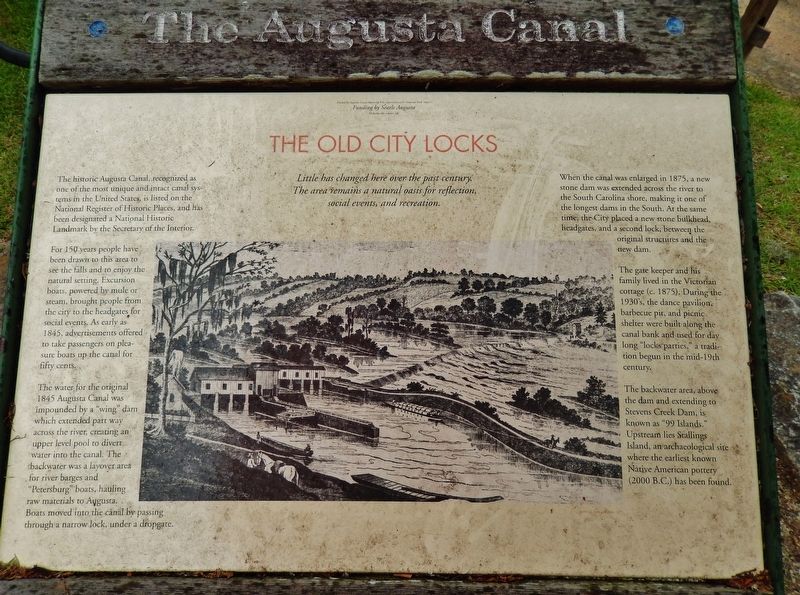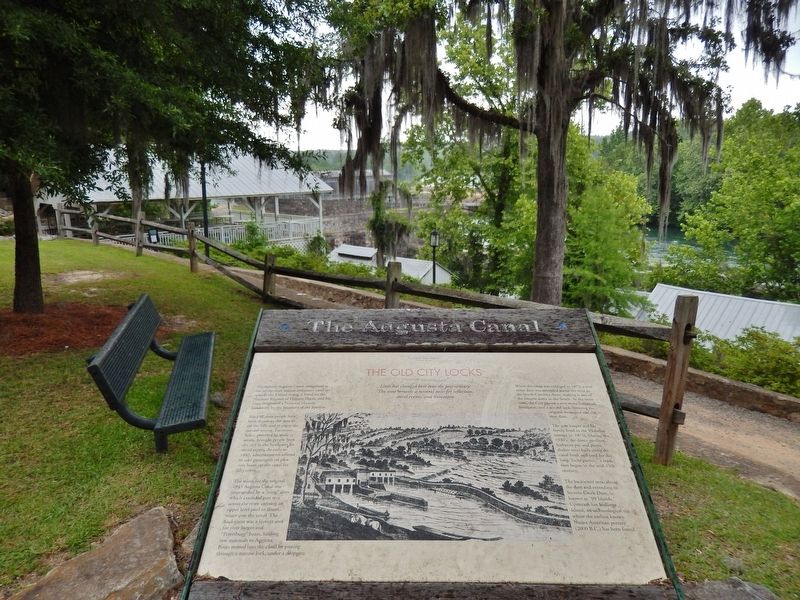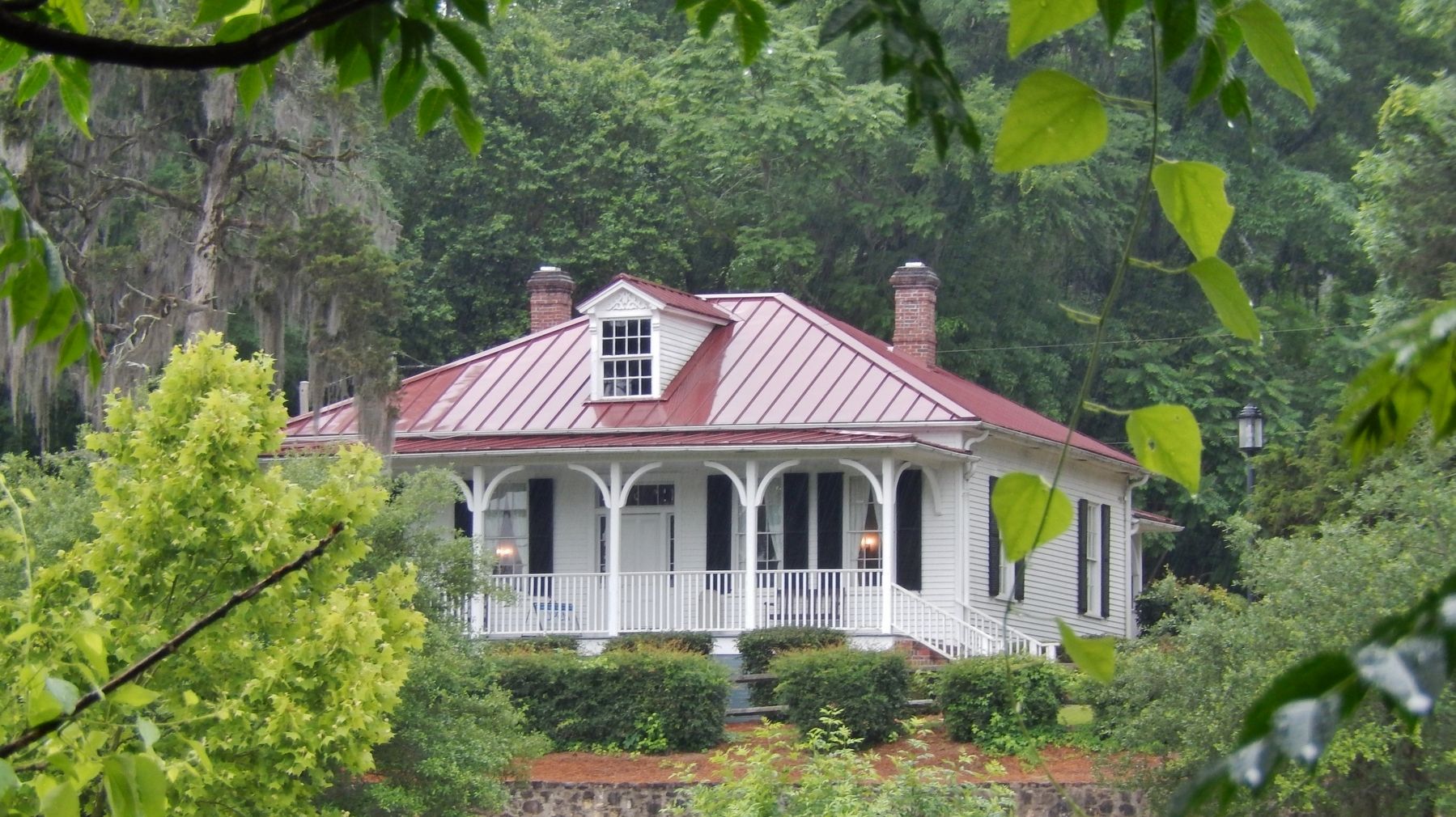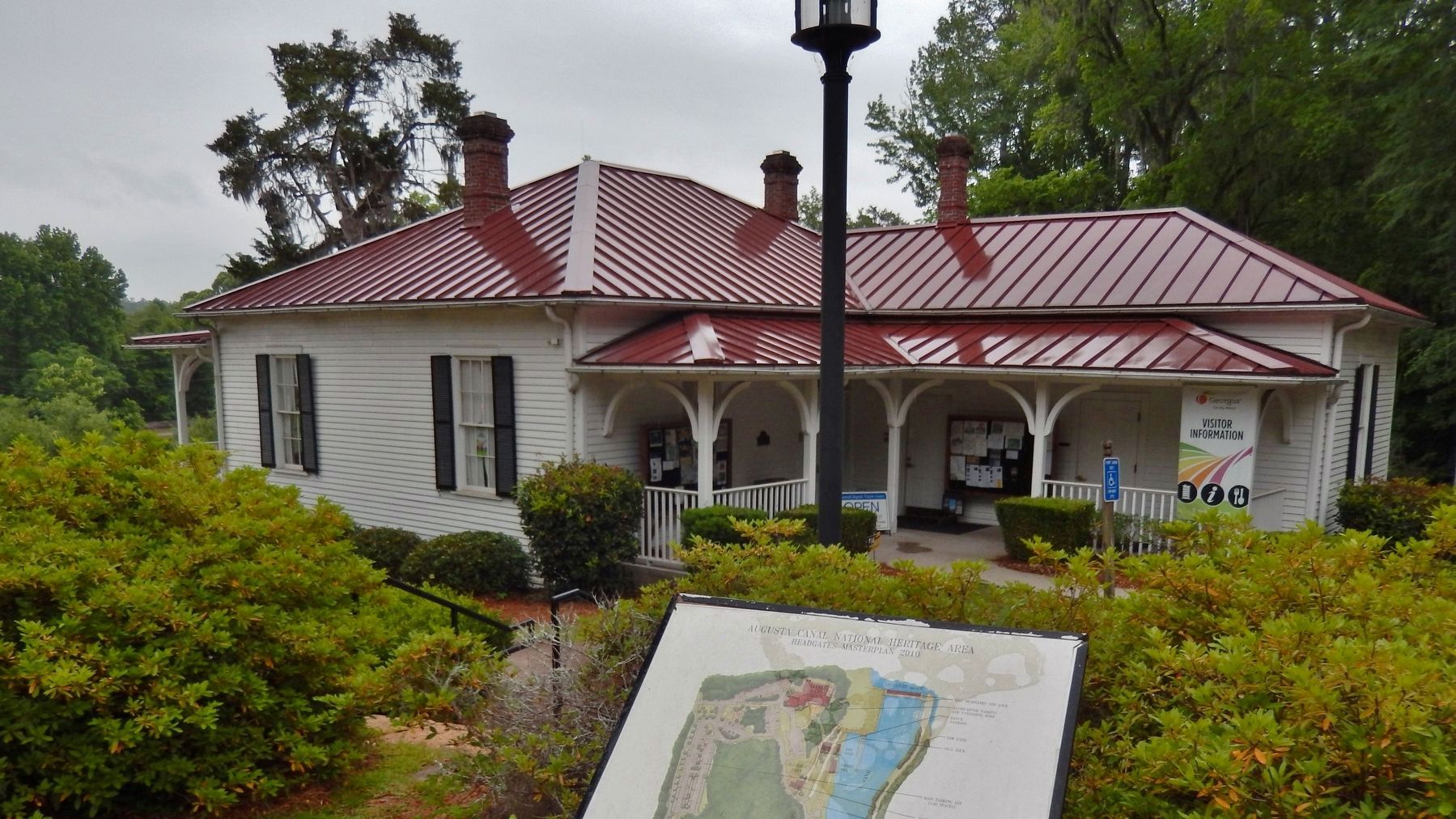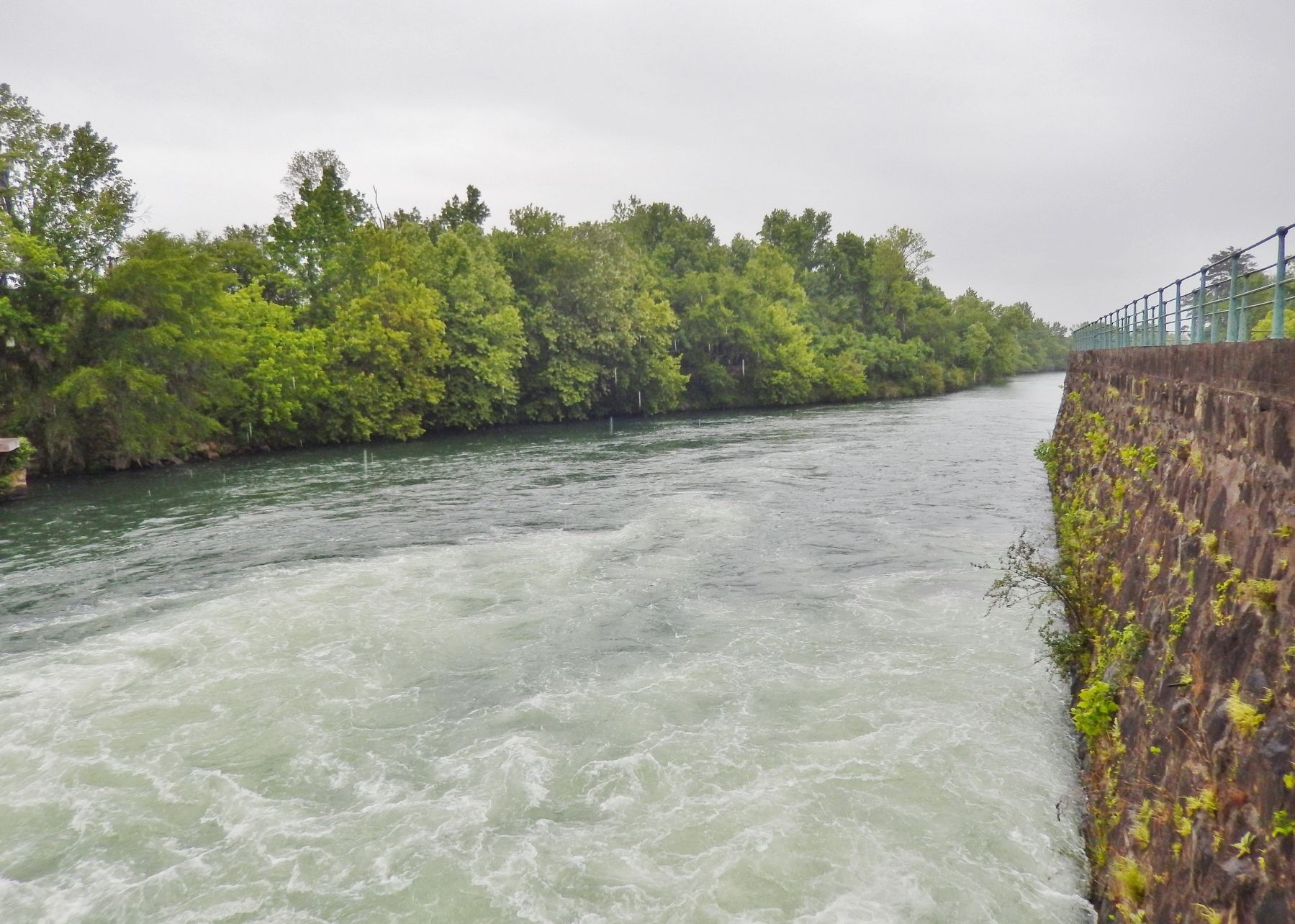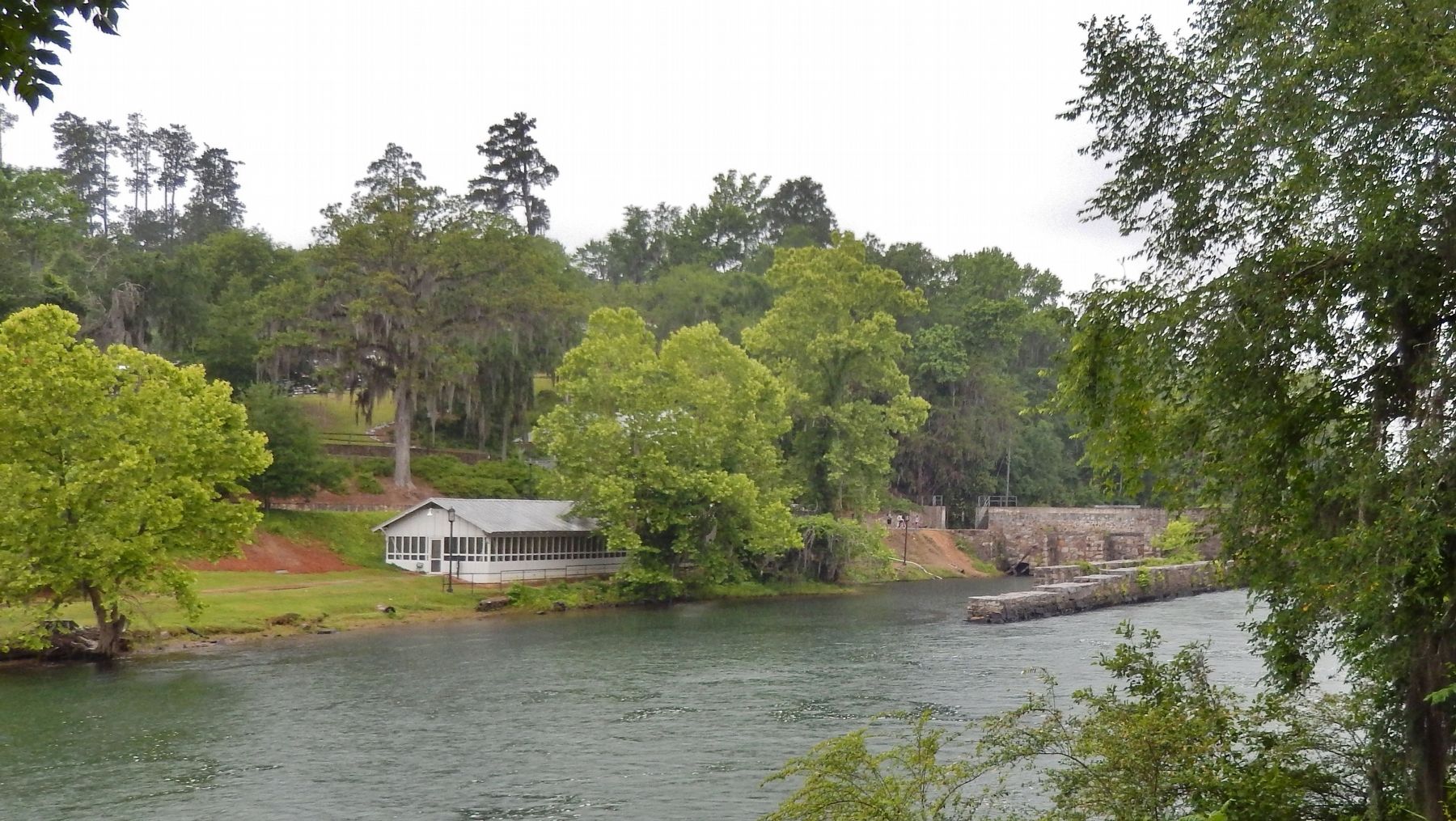Martinez in Columbia County, Georgia — The American South (South Atlantic)
The Old City Locks
The Augusta Canal
Little has changed here over the past century. The area remains a natural oasis for reflection, social events, and recreation.
The historic Augusta Canal, recognized as one of the most unique and intact canal systems in the United States, is listed on the National Register of Historic Places, and has been designated a National Historic Landmark by the Secretary of the Interior.
For 150 years people have been drawn to this area to see the falls and to enjoy the natural setting. Excursion boats, powered by mule or steam, brought people from the city to the headgates, for social events. As early as 1845, advertisements offered to take passengers on pleasure boats up the canal for fifty cents.
The water, for the original 1845 Augusta Canal was impounded by a "wing" dam which extended part way across the river, creating an upper level pool to divert water into the canal. The backwater was a layover area for river barges and "Perersburg" boats, hauling raw materials to Augusta. Boats moved into the canal by passing through a narrow lock, under a dropgate.
When the canal was enlarged in 1875, a new stone dam was extended across the river to the South Carolina shore, making it one of the longest dams in the South. At the same time, the City placed a new stone bulkhead, headgates, and a second lock, between the original structures and the new dam.
The gate keeper and his family lived in the Victorian cottage (c. 1875). During the 1930's, the dance pavilion, barbecue pit, and picnic shelter were built along the canal bank and used for day long "locks-parties," a tradition begun in the Mid-19th century.
The backwater area, above the dam and extending to Stevens Creek Dam, is known as "99 Islands." Upstream lies Stallings Island, an archaeological site where the earliest known Native American pottery (2000 B.C.) has been found.
Erected by Augusta Canal Authority.
Topics. This historical marker is listed in these topic lists: Native Americans • Parks & Recreational Areas • Waterways & Vessels.
Location. 33° 33′ N, 82° 2.332′ W. Marker is in Martinez, Georgia, in Columbia County. Marker can be reached from Evans to Locks Road, one mile east of Stevens Creek Road, on the left when traveling east. Marker is located within Savannah Rapids Regional Park, beside the walkway at the southeast end of the main parking lot. Touch for map. Marker is at or near this postal address: 3300 Evans to Locks Road, Augusta GA 30907, United States of America. Touch for directions.
Other nearby markers. At least 8 other markers are within 5 miles of this marker, measured as the crow flies. The Fall Line and Headgates (about
600 feet away, measured in a direct line); Lt. General James Longstreet (1821-1904) (approx. 1.8 miles away in South Carolina); Birthplace of General James Longstreet (approx. 1.9 miles away in South Carolina); Big Stevens Creek Baptist Church (Hardy's) (approx. 3.7 miles away in South Carolina); The Martintown Road (approx. 3.8 miles away in South Carolina); Birthplace of General Joseph Wheeler (approx. 4.2 miles away); Samuel Hammond (approx. 4.6 miles away in South Carolina); Joseph Wheeler (approx. 4.7 miles away).
Also see . . . Augusta Canal History.
The Augusta Canal, built in 1845 as a source of power, water and transportation, is the only intact industrial canal in the American South in continuous use. Spearheaded by Augusta native Henry H. Cumming, who perceived that Augusta could one day become “the Lowell of the South,” the Augusta Canal began to fulfill Cumming’s vision in short order. By 1847 the first factories – a saw and grist mill and the Augusta Factory-were built, the first of many that would eventually line the Canal. (Submitted on February 23, 2018, by Cosmos Mariner of Cape Canaveral, Florida.)
Credits. This page was last revised on May 30, 2020. It was originally submitted on February 23, 2018, by Cosmos Mariner of Cape Canaveral, Florida. This page has been viewed 1,106 times since then and 45 times this year. Photos: 1, 2, 3, 4, 5, 6. submitted on February 23, 2018, by Cosmos Mariner of Cape Canaveral, Florida. • Bernard Fisher was the editor who published this page.
